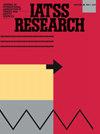新冠肺炎疫情对交通违法行为趋势的影响分析
IF 3.3
Q3 TRANSPORTATION
引用次数: 0
摘要
交通违规行为可能对公共安全和道路基础设施构成重大挑战。可以根据从观察到的趋势中得出的见解来管理这种违法行为的后果。随着新冠肺炎疫情的爆发和驾驶行为的变化,违规模式受到影响。这项研究调查了2016年至2022年伊朗伊斯法罕省的交通违规行为,重点是安全带和超速违规行为。采用时间序列分析和计数数据建模两种分析方法来探讨这些违规行为的各个方面。时间序列分析包括分析每月累计违规记录,以预测大流行之前和期间的趋势。对预测模式和观察模式的比较显示,交通违法行为发生了显著变化,特别是在2021年2月开始接种疫苗运动之后。该研究还发现,超速违规记录受到速度控制摄像机维护的影响。第二种方法侧重于警察发布的三个时期的违规记录:两个大流行前阶段(Pre1和Pre2)和一个大流行阶段(Pand)。一组零截断泊松模型评估了Pre1和Pre2的个体和环境因素,如汽车类型、车牌、驾驶员特征、一天中的时间、日类型、道路等级和季节。结果表明,这些因素对违规概率有显著影响。为了分析COVID-19对这些影响因素的影响,我们将另一个零截断泊松模型应用于Pand阶段,并使用t检验比较三个阶段的系数。研究结果显示,这些因素对安全带和超速行为的影响在统计学上发生了显著变化。在Pand阶段,驾驶员特征、日类型和季节对安全带违规的决定作用更大,而车牌类型的重要性降低。本文章由计算机程序翻译,如有差异,请以英文原文为准。
An analysis of COVID-19 effects on the trends of traffic violations
Traffic violations can pose significant challenges to public safety and road infrastructure. The consequences of such violations may be managed based on the insights from their observed trends. Following the COVID-19 outbreak and changes in driving behavior, the violation patterns were affected. This study examines traffic violations in the Isfahan province of Iran between 2016 and 2022, focusing on seat belt and speeding violations. Two analytical approaches, time series analysis and count data modeling, were employed to explore various aspects of these violations. Time series analysis involved analyzing aggregated monthly violation records to forecast trends before and during the pandemic. A comparison of projected and observed patterns revealed remarkable shifts in traffic violations, especially after the start of the vaccination campaign in February 2021. This study also found that recording speeding violations was influenced by the maintenance of the speed-control cameras. The second approach focused on police-issued violation records across three periods: two pre-pandemic phases (Pre1 and Pre2) and a pandemic phase (Pand). A set of zero-truncated Poisson models assessed individual and environmental factors in Pre1 and Pre2, such as car type, license plate, driver characteristics, time of day, day type, road hierarchy, and season. The results showed that these factors significantly impacted violation probabilities. To analyze the effects of COVID-19 on these influential factors, another zero-truncated Poisson model was applied to the Pand phase, along with t-tests comparing the coefficients across the three phases. The findings revealed statistically significant changes in how these factors influenced seat belt and speeding violations. Notably, driver characteristics, day type, and season became more determinant for seat belt violations in the Pand phase, while the importance of license plate type decreased.
求助全文
通过发布文献求助,成功后即可免费获取论文全文。
去求助
来源期刊

IATSS Research
TRANSPORTATION-
CiteScore
6.40
自引率
6.20%
发文量
44
审稿时长
42 weeks
期刊介绍:
First published in 1977 as an international journal sponsored by the International Association of Traffic and Safety Sciences, IATSS Research has contributed to the dissemination of interdisciplinary wisdom on ideal mobility, particularly in Asia. IATSS Research is an international refereed journal providing a platform for the exchange of scientific findings on transportation and safety across a wide range of academic fields, with particular emphasis on the links between scientific findings and practice in society and cultural contexts. IATSS Research welcomes submission of original research articles and reviews that satisfy the following conditions: 1.Relevant to transportation and safety, and the multiple impacts of transportation systems on security, human health, and the environment. 2.Contains important policy and practical implications based on scientific evidence in the applicable academic field. In addition to welcoming general submissions, IATSS Research occasionally plans and publishes special feature sections and special issues composed of invited articles addressing specific topics.
 求助内容:
求助内容: 应助结果提醒方式:
应助结果提醒方式:


